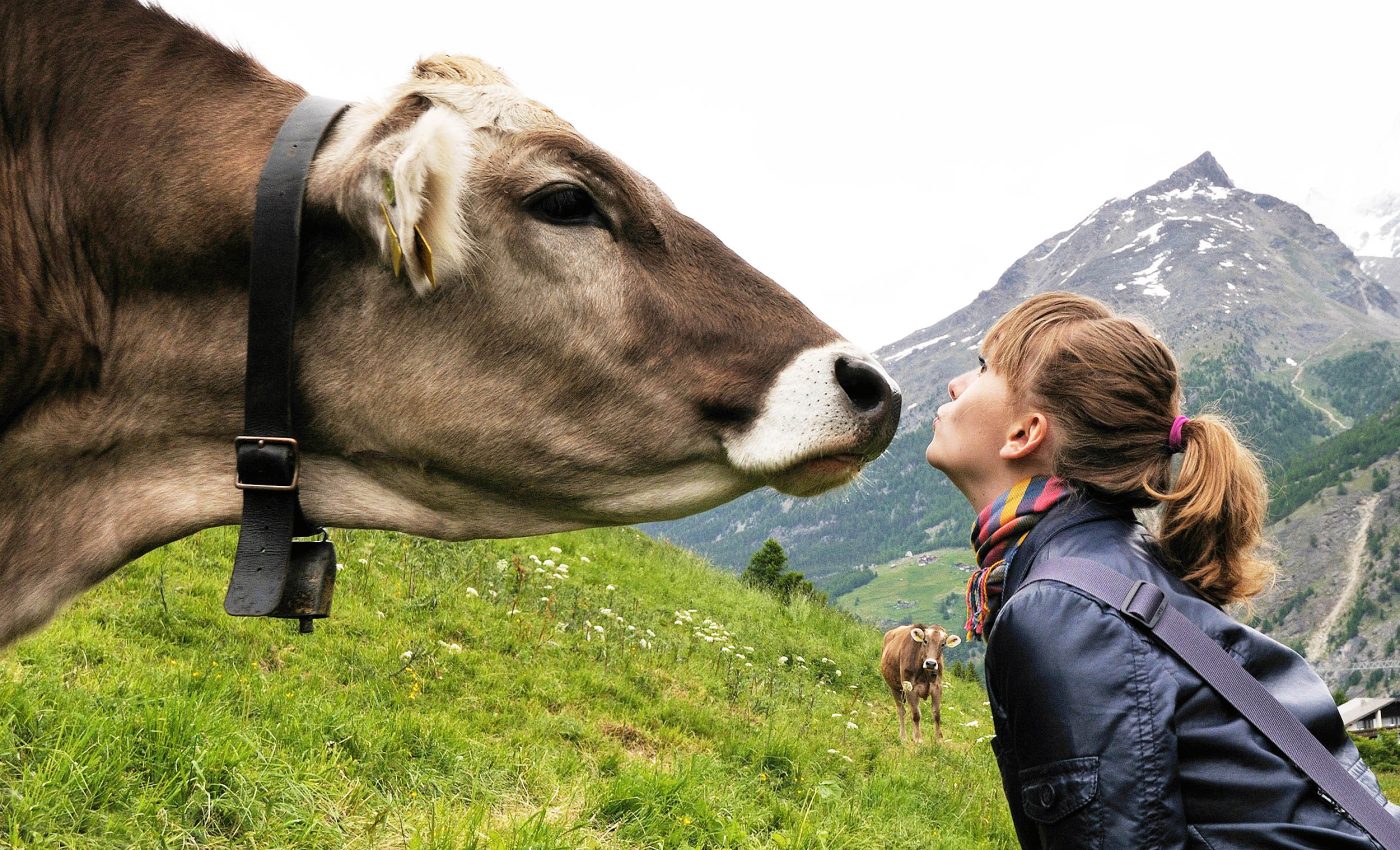
Cows who are 'cuddled' as therapy animals strongly prefer women over men
City dwellers in the Netherlands have a curious way of clearing their heads. Rather than see a psychologist or seek therapy through other means, they hop on a train, ramble into the green lowlands, and hug a cow.
The practice, known as “koeknuffelen,” sounds quirky until you try it; within minutes most visitors feel their shoulders drop and their pulse slow.
Scientists have long suspected that animal-assisted therapy works in part because soft noses, steady heartbeats, and wordless company nudge our nervous system toward calm.
Until now, almost every formal study has focused on dogs, cats, or the occasional rabbit. Cows, though, linger on the fringes – huge, sweet, and largely untested.
Cuddling cows as therapy
Two researchers – Dr. Katherine Compitus of New York University and Dr. Sonya Bierbower of the United States Military Academy at West Point – set out to change that.
Their paper, “Cow Cuddling: Cognitive Considerations in Bovine-Assisted Therapy,” appears in the journal Human-Animal Interactions and may tip the field toward larger pasture-mates.
Conducted at Surrey Hills Sanctuary in New York State, the pilot project paired 11 volunteers, ages 13 to 79, with two mellow steers named Magnus and Callum.
The work used the 24-item Human-Animal Interaction Scale, a survey that captures how often people stroke, lean on, or otherwise connect with an animal and records the animal’s own moves in return. Each session lasted 45 minutes to prevent fatigue on either side of the fence.
How cows and people respond
Magnus and Callum greeted their guests with slow sniffs, accepted hay pellets from open palms, and even settled onto the grass for a shared lounge.
When interested, they licked sleeves – a bovine version of social grooming – and, when finished, they simply rose and wandered off. Unfriendly gestures were scarce.
One teenager admitted she had expected headbutts but, instead, “fell in love with cows” before the session ended.
The steers’ preferences turned out to be surprisingly specific.
“We have discovered in the current study that bovine-assisted therapy may not only be an effective treatment model that benefits human participants but appears to be enriching to the cattle participants as well, as shown by their proximity to and continuous interactions with humans,” Dr. Compitus said.
The data also revealed a gender twist: the animals spent more time beside women than men, and the women, in turn, reported stronger feelings of attachment.
Measuring calm signals from cow therapy
Stress in cattle shows up as loud calls, quick tail flicks, or rigid backs. None spiked during these cuddle sessions. Instead, the animals’ easy breathing and willingness to lie down suggested comfort.
“Two of the gaps in the research we address in this study are the inclusion of cattle in AAT and an examination of the cognitive processes of animals involved in AAT,” Dr. Bierbower noted.
For a field that often views animals as passive tools, tracking the cow’s point of view marks an important shift.
Therapists already use dogs to ease anxiety during dental visits and miniature horses to coax speech from children on the autism spectrum. Cattle bring a different scale.
A mature steer may top 1,500 pounds, yet these gentle giants lower their heads for scratches much like a Labrador does. That contrast – immense size, peaceful manner – can amplify the sense of safety that therapy animals provide.
Why size matters
Touch triggers a release of oxytocin, sometimes called the “bonding hormone,” in both humans and many mammals. The hormone slows heart rate, reduces cortisol, and boosts feelings of trust.
While a purring cat can spark that reaction, leaning against a broad cow magnifies the tactile cue: more surface area, deeper vibrations, and a steadier baseline heart rhythm.
Researchers in earlier dog-based trials found that even brief petting lowers blood pressure. The current cattle study hints the same benefit may hold when the animal outweighs the participant by a ton.
Because cows live in herds and often groom one another, they may already possess social wiring that lets them extend calm to another species.
What does all of this mean?
Dr. Compitus reaffirmed that the therapy appeared enriching for the steers, citing their close proximity and continuous interactions with humans.
Yet she also cautioned, “It is unclear without further testing whether the animals sought out the attention of women in general or if the women were more likely to initiate the actions when compared to the men participants.”
Future work will need larger herds, more diverse volunteers, and perhaps heart-rate monitors on both sides of the cuddle. It will also need to check whether cattle enjoy the work long-term or simply tolerate it for snacks.
Ethical guidelines already require therapy dogs to rest between client visits; similar safeguards for bovine partners will be crucial.
What’s next for cow cuddle therapy?
Animal-assisted therapy grew from a fringe idea in the 1960s to a mainstream adjunct in hospitals and schools today.
Adding cows may seem like a pastoral gimmick, yet the early numbers suggest genuine promise. Eleven participants is small, but every study starts somewhere, and Magnus and Callum appear to have opened the gate.
As Dr. Bierbower and Dr. Compitus refine their protocols, mental-health clinics might soon book time at local farms, giving stressed-out teens and weary adults a chance to swap city noise for the slow beat of a cud-chewing companion.
If larger trials confirm the soothing power of a 1,500-pound hug, the phrase “therapy animal” could soon conjure more than wagging tails – it might also bring to mind a soft-eyed steer waiting beneath an open sky.
The full study was published in the journal Human-Animal Interactions.
—–
Like what you read? Subscribe to our newsletter for engaging articles, exclusive content, and the latest updates.
Check us out on EarthSnap, a free app brought to you by Eric Ralls and Earth.com.
—–













